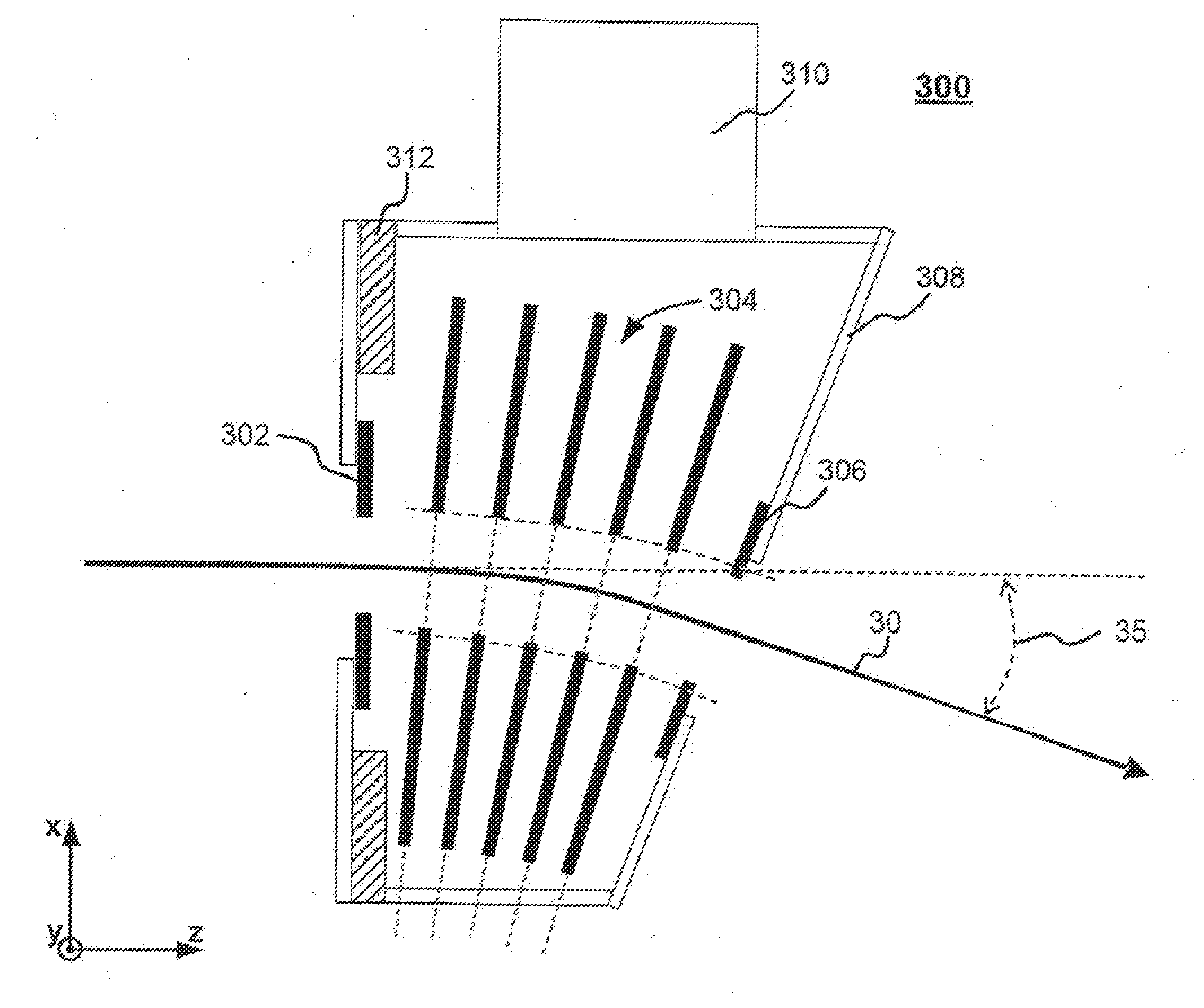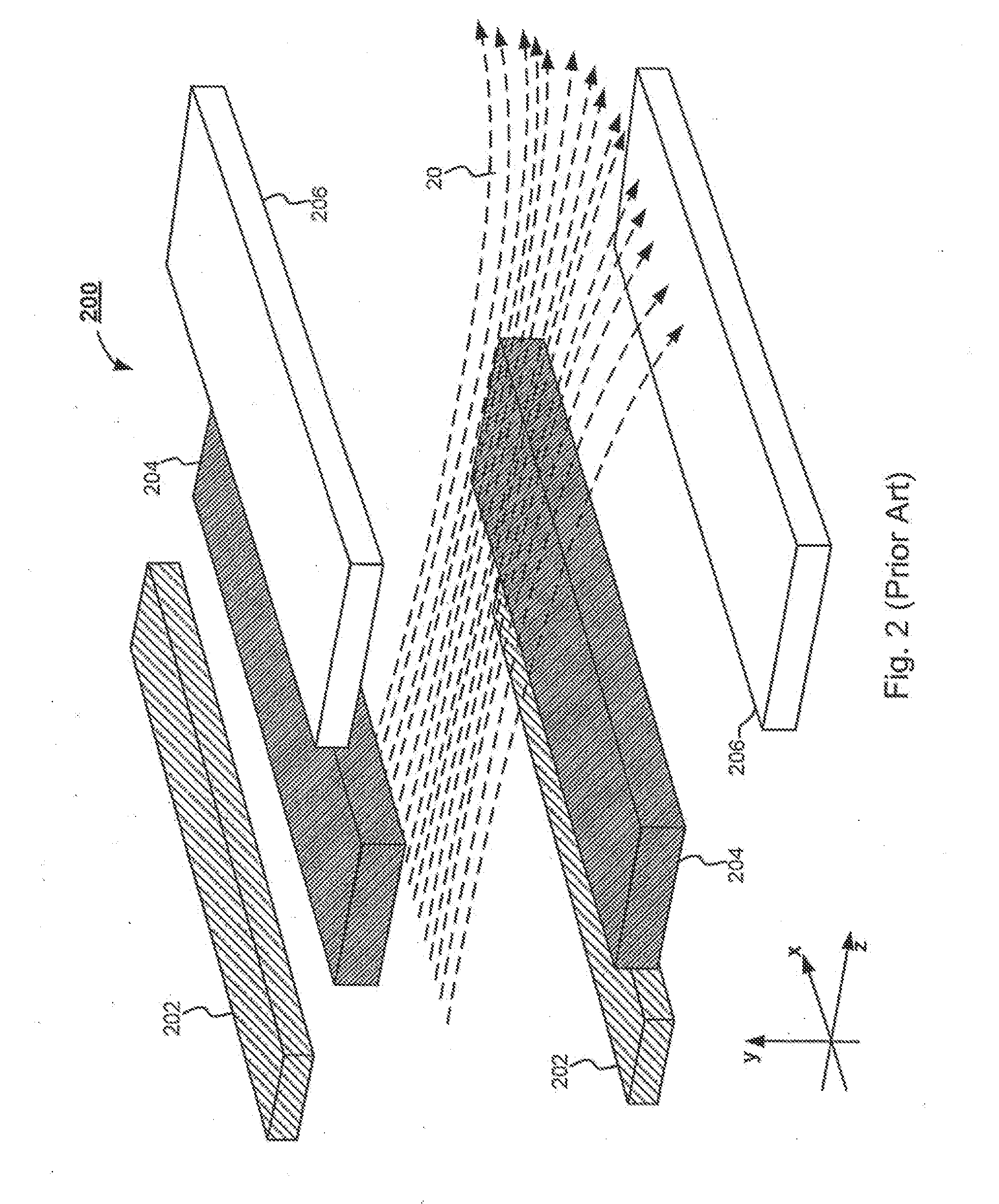System and method for controlling deflection of a charged particle beam within a graded electrostatic lens
a technology of electrostatic lens and charged particle, which is applied in the direction of beam deviation/focusing by electric/magnetic means, printers, instruments, etc., can solve the problems of difficult to tune the ion beam, (may not be readily feasible, conventional systems and methods do not provide a solution for independent control of the deflection and/or focus of the ion beam, etc., and achieve small adjustment of the deflection angle
- Summary
- Abstract
- Description
- Claims
- Application Information
AI Technical Summary
Benefits of technology
Problems solved by technology
Method used
Image
Examples
Embodiment Construction
[0029]To solve the problems with conventional lens configurations, an improved electrostatic lens configuration may include one or more variable-control suppression / focusing electrodes. These electrodes may include a variety of shapes, curvatures, positions, materials, and / or configurations that are independently or separately controlled / biased with respect to one another thereby providing flexible and effective manipulation of an ion beam's shape as well as its energy.
[0030]FIG. 3 depicts a side view of an exemplary graded lens configuration 300. The graded lens configuration 300 may include several sets of electrodes. For example, the graded lens configuration may include a set of entrance electrodes 302, one or more sets of suppression / focusing electrodes 304, and a set of exit electrodes 306. Each set of electrodes may have a space / gap to allow an ion beam 30 (e.g., a ribbon beam) to pass therethrough.
[0031]In some embodiments, these electrodes (e.g., entrance electrode 302, sup...
PUM
 Login to View More
Login to View More Abstract
Description
Claims
Application Information
 Login to View More
Login to View More - R&D
- Intellectual Property
- Life Sciences
- Materials
- Tech Scout
- Unparalleled Data Quality
- Higher Quality Content
- 60% Fewer Hallucinations
Browse by: Latest US Patents, China's latest patents, Technical Efficacy Thesaurus, Application Domain, Technology Topic, Popular Technical Reports.
© 2025 PatSnap. All rights reserved.Legal|Privacy policy|Modern Slavery Act Transparency Statement|Sitemap|About US| Contact US: help@patsnap.com



